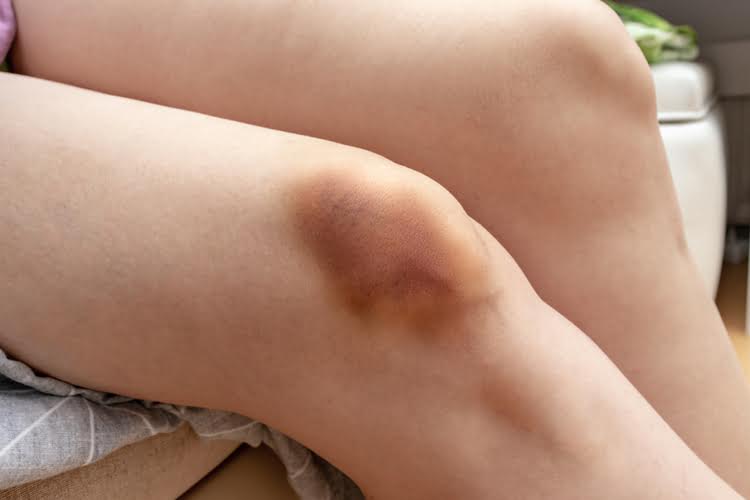We assessed the risk of bias for RCTs and CCTs according the five criteria recommended by the Cochrane Handbook for Systematic Reviews of Interventions (Higgins 2011). The first part of the tool involves describing what was reported to have happened in the study. The second part involves assigning a judgement relating to the risk of bias for that entry in terms of low, high, or unclear risk. To make these judgements, we used the criteria listed in the Cochrane Handbook for Systematic Reviews of Interventions adapted to the addiction field (see Appendix 6). The co‐occurrence of depression and alcohol dependence carries potential problems in the diagnostic process (Pettinati 2013; Schuckit 2006).

Characteristics of studies awaiting assessment [ordered by study ID]
For one, alcohol consumption and Lexapro individually can make you feel drowsy, less responsive, and depressed. Then I’ll detail the side effects of Lexapro as well as how soon you can start drinking after going off of the medication. Win With Black Women, a group of black women leaders, held a Zoom call with more than 44,000 participants on Sunday night to throw their support behind the vice-president.
- The second part involves assigning a judgement relating to the risk of bias for that entry in terms of low, high, or unclear risk.
- Additionally, anxiety and depression can worsen when using alcohol and Lexapro together.
- Lexapro, also known as escitalopram, is commonly used to treat major depressive disorder and generalized anxiety disorder.
- Indeed, antidepressants improve only some outcomes (i.e. the number of abstinent participants and the number of drinks per drinking days) and not others (e.g. the rate of abstinent days).
- Usually, the basic instructions from healthcare providers include recommendations on the dosage and the schedule for taking medication, but it’s essential to discuss other aspects of treatment too.
- In this story, each blind man touches a different part of the elephant and draws his conclusion about what the elephant is like.
Lexapro and Alcohol: Side Effects
Lexapro, also known as escitalopram, is an antidepressant medication that belongs to the selective serotonin reuptake inhibitor (SSRI) class. It is commonly used to treat major depressive disorder and generalized anxiety disorder. Lexapro works by increasing the levels of serotonin, a neurotransmitter, in the brain, which helps improve mood and alleviate anxiety.
- If you are trying to change or stop your medication to be able to drink, this may be a sign of an alcohol use disorder.
- Spontaneous recovery and intermittent periods of lower alcohol intake are of typical in alcohol dependence [54,55].
- But when you’re taking Lexapro, there are more reasons to be concerned about drinking behavior, especially excessive drinking behavior and alcoholic substance use disorder.
- There was high heterogeneity in the selection of outcomes and the rating systems used for diagnosis and outcome assessment.
- The second meta‐analysis investigated the efficacy of antidepressants in people with substance‐use disorder with and without depression (Torrens 2005).
- We also searched for ongoing and unpublished studies via ClinicalTrials.gov () and the World Health Organization (WHO) International Clinical Trials Registry Platform (ICTRP) (apps.who.int/trialsearch/).
Can Mixing Drugs Like Lexapro And Alcohol Point To An Underlying Addiction?
A medically supervised detox program offers the medical support needed to ensure that you withdraw from alcohol as safely and comfortably as possible. Detox programs can last anywhere from one to 10 days and are generally offered in a medical environment, such as a hospital or treatment facility. Five studies evaluated suicide and suicidal attempts (see Primary outcomes) (Adamson 2015; Cornelius 1997; Habrat 2006; Kranzler 2006 arm A; Moak 2003; 888 participants) (see Appendix 8; Appendix 9).
- We did not use data presented as a number of positive urine or breath alcohol tests relative to the total number of tests in the experimental and control groups as a measure of substance use.
- Alcohol withdrawal symptoms can start as soon two hours after your last drink and can last for days or even weeks depending on your physical dependence on the substance.
- When it comes to the dosage of Lexapro, it is important to follow the recommended guidelines provided by a healthcare professional.
For example, side effects like nausea, dry mouth, sleepiness, dizziness, diarrhea, and insomnia may become more severe when drinking. While there has not been substantial testing on the interactions of Lexapro and alcohol, it is still advised to not mix the two drugs. Both substances affect the brain, and any interactions that may occur can potentially be serious. These studies were not included in the analysis as they used self‐administered scales. https://www.mybirds.ru/forums/topic/10444-prekratite-spasat-voronyat/page/21/ We did not find any unpublished studies despite a significant effort in contacting all the first authors of the included studies and the search of conference proceedings. There were few studies comparing one antidepressant versus another or antidepressants versus other interventions, and these had a small sample size and were heterogeneous in terms of the types of interventions that were compared, yielding results that were not informative.
I have lost my job, had to move home, have a criminal record and lost the respect of family and friends. This could all have been avoided if there had been proper warnings in place and effective communications between different authorities. You can also talk to your primary care physician to see what addiction resources are in your area. Your physician may also recommend additional medications, temporarily lowering your dose of Lexapro or other protective measures to ensure you’re as safe as possible while dealing with your addiction. If you’re considering mixing Lexapro and alcohol or are worried about a loved one that is mixing Lexapro and alcohol, you’re in the right place.

Is It Safe to Drink Alcohol With Lexapro?
Drinking alcohol while taking Lexapro made have side effects, including decreasing the effectiveness of the medication. It works by increasing serotonin levels in the brain to boost mood and minimize feelings of anxiety. In clinical tests, combining Lexapro with alcohol did not increase the http://www.gitaristam.ru/accords/eng/m/Muse.htm mental or physical impairments caused by alcohol. It is important to consult your healthcare provider before stopping any of your medications. Other serious side effects of mixing Lexapro with alcohol can include panic attacks, sudden outbursts of emotion or violence, and overdosing.
Han 2013 published data only
Ultimately, the effectiveness of Lexapro in MDD should be assessed on an individual basis with the guidance of a healthcare professional. When it comes to side effects, both Lexapro and Zoloft share similar potential adverse reactions. These can include nausea, headache, sexual dysfunction, and gastrointestinal disturbances. However, the specific side effects and their frequency can vary between individuals. Staying hydrated and using sugar-free gum or candy may help alleviate this symptom. If any of these side effects become bothersome or persist, it is recommended to consult with your healthcare provider.

Any time you drink while taking Lexapro, you put yourself at risk for potentially serious side effects. If you drink alcohol at all, it’s best to drink in moderation during treatment with the drug. Food and Drug Administration, clinical trials have yet to show with certainty that Lexapro increases alcohol-related https://www.globalfashionexchange.org/explore-the-world-of-sustainable-fashion/ cognitive and motor impairments. Instead, it means that more research is needed to understand how Lexapro and alcohol interact with each other in your brain. However, what we do know for sure is that alcohol consumption can potentially worsen depression, even in individuals taking antidepressants.
